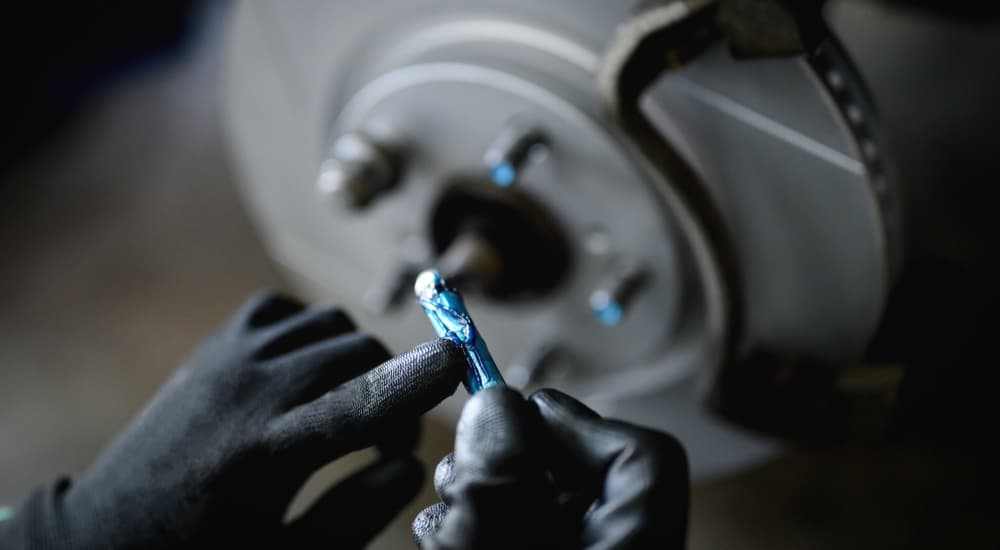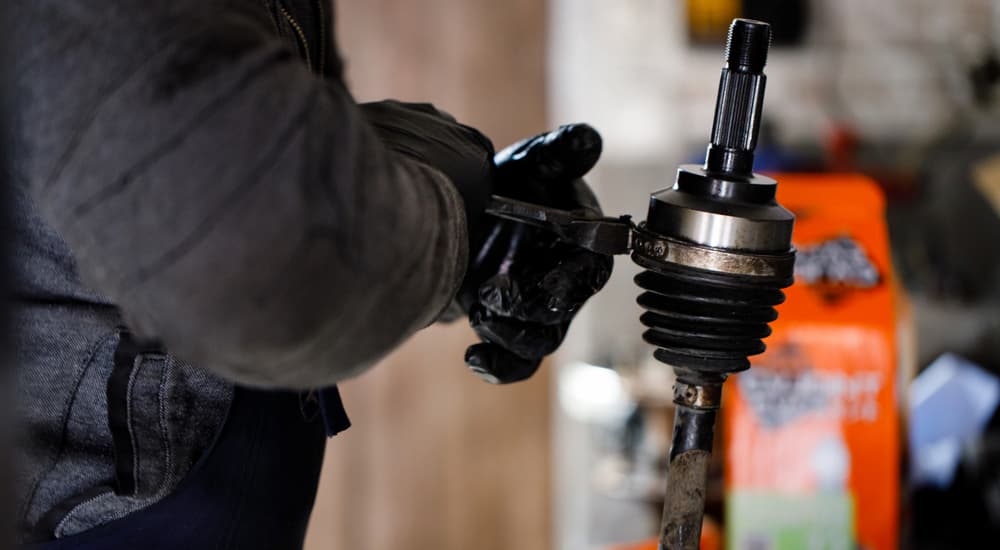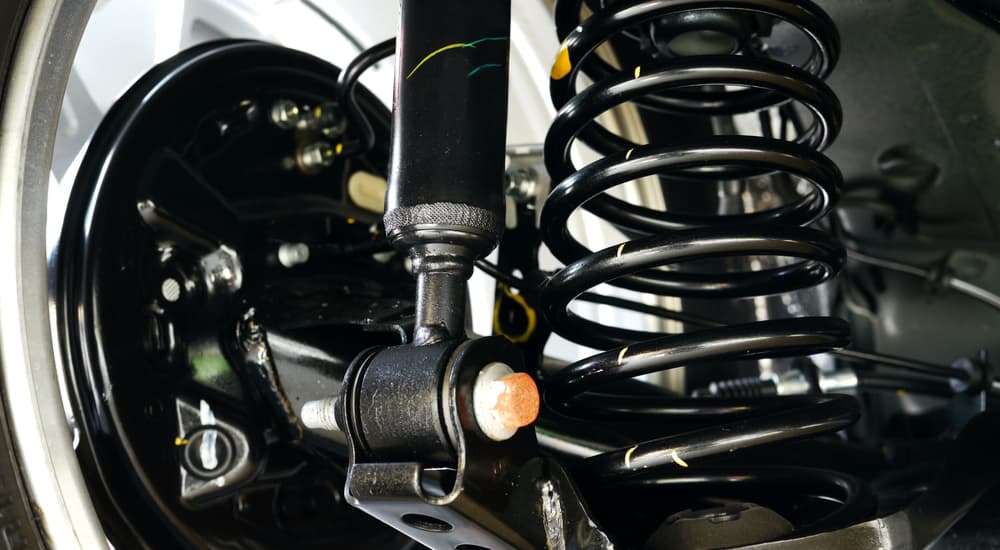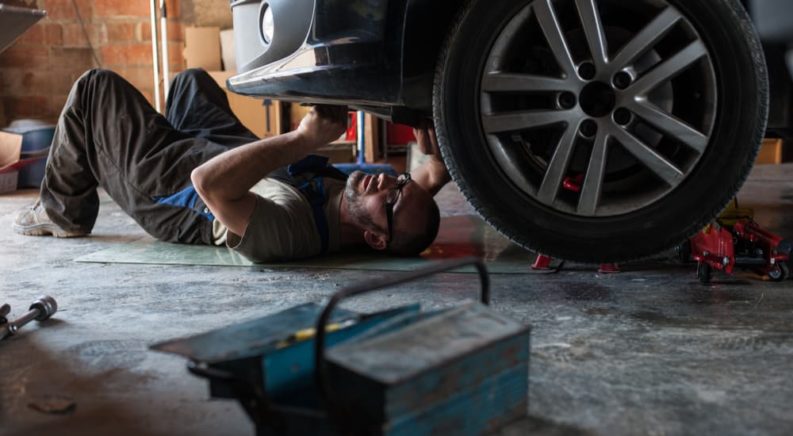When working on a vehicle, few things are worse than reaching for some anti-seize lubricant or bearing grease only to discover that you don’t have any. Most of us make sure we have the right parts ready when we’re working on something – it’s easy to remember spark plugs when you’re replacing one because that’s the whole point. But having the right greases and lubricants can be easily overlooked until you’re elbow deep in replacing your brakes, taking part of your engine apart, or doing some suspension work and discover your can of anti-seize has gone empty.
Today, we’re going to take a look at different types of greases and lubricants that you’ll often need when you’re working on your vehicle. These are the things that are great for general and specific uses, so you might forget to pick them up when you’re getting other parts. But making sure you keep the right greases and other items on hand will make your life a lot easier and prevent you from having to make a quick run to the store while you’re trying to finish something up. It’s a good idea to always keep many of these in stock in your garage or workshop so that you’re fully equipped to get the job done.
Aluminum Grease
Although typically used in the food industry, aluminum greases can also be excellent for automotive work. They can withstand extreme temperatures, are quite water-resistant, and they’re good at preventing rust, corrosion, and oxidation. However, aluminum grease is less common than lithium grease, and the two mostly do the same job.

Barium Grease
This is a high-performance type of grease that’s typically used for industrial and manufacturing applications, though it might be found in some commercial vehicles. It’s highly resistant to extreme temperatures, water and is great for fighting oxidation.
Bentone Grease
This is a clay-based lubricant, also called “non-melt lubricant,” that’s typically used in construction, manufacturing, and other demanding industries. You won’t usually find it used for automotive work, but it’s still good to know about it.
Calcium Grease
One of the oldest types of grease available for general use, calcium greases offer excellent water resistance and protection from corrosion. However, they’re best for lower temperatures, so you won’t often find this used for automotive work. Still, as lithium prices go up, calcium is growing in popularity, so it’s one to know.
Lithium Grease
This is the most popular and common option for automotive grease. Lithium grease offers high viscosity, is very durable, and provides great protection against oxidation and corrosion, plus it works well at high temperatures. This is a common type of lubricant used in automotive, industrial, and household applications, so you’ll find it pretty frequently and should have some in your toolkit.

Polyurea Grease
Polyurea grease has become increasingly popular lately because it offers terrific water resistance and protection against oxidation, corrosion, and rust. It’s durable and versatile, working well at high temperatures, so it’s found in a lot of uses. While you won’t commonly encounter it in the average garage, it is favored for long-life applications such as wheel bearings and CV joints.
Sodium Grease
Sodium grease provides great protection from rust and excellent overall lubrication, but it is not very water-resistant and has low oxidation stability. While it used to be used for items like wheel bearings, it has been almost entirely superseded by lithium greases for automotive purposes. Unless you have no other choice, there are generally better options.
All Purpose Grease
An All Purpose or “AP” grease is one that works well in a wide range of situations and applications. These are typically ones that protect well against rust and corrosion, and they can be good for resisting high temperatures. AP grease tends tobe water-resistant, and lithium greases are the most common AP grease options.
 Multi Purpose Grease
Multi Purpose Grease
Similar to AP greases, a Multi Purpose or “MP” grease is one that’s commonly used in automotive applications, especially for consumer vehicles. These greases offer good protection against water and oxidation but can fail when exposed to high temperatures. This means that they are most commonly used for chassis and suspension work.
Extreme Pressure Grease
Finally, an Extreme Pressure or “EP” grease is one that’s far more resistant to intense heat and pressure than AP and MP greases. This is a more specialized sort of grease that adheres well to surfaces and is used to keep moving parts well lubricated even at high pressures. If you don’t tend to do engine work or handle parts under similar loads, then you probably won’t need EP grease.
Assembly Grease
As its name suggests, assembly grease is typically used when you’re putting something together, like an engine. This type of grease is most commonly used to protect components when rebuilding an engine because there is no oil in the engine until after it has been started for the first time. It’s typically designed for use on engine parts like cams, valve guides, and more.

Bearing Grease
The wheel bearings on your vehicle are essential to your basic, daily performance, and when not lubricated properly, they typically respond with loud noises while you drive. Bearing grease is specifically designed for this purpose and is typically made from a lithium base or synthetic grease with excellent resistance to water, oxidation, and corrosion. While older cars had to have their wheel bearings regreased periodically, modern bearings are generally sealed and designed to last for the life of the vehicle.
Brake and Caliper Grease
Although your brakes use friction to help your vehicle stop, you don’t want friction building up between the moving parts of your brake system. Brake and caliper grease is used to keep the moving parts and metal contact points properly lubricated so that your brakes don’t damage themselves during standard use. You can apply this grease to backing plates, brake-pad contact points, caliper pins, and other parts of your brake system. Synthetic grease is popular for this, designed to resist moisture and not wash out when you drive in rainy or snowy conditions.
Anti-Seize Lubricant
One of the best ways to avoid problems in the future is to protect against them ahead of time. If you’re working on your vehicle and putting parts back together, it’s often a good idea to use a little anti-seize lubricant on bolts and similar components that get put together. This will protect against corrosion, seizing, and galling so that you can more easily remove the bolts or other parts again in the future (ideal for things that need to come apart for routine service or repairs). Aluminum, copper, and graphite are often used for anti-seize formulas, and this is especially important if you live in a cold area with salt on the road.
Penetrant Lubricants
Penetrants are designed to be sprayed onto parts that are stuck in order to penetrate between them and lubricate them so they can release from each other more easily. PB Blaster is one of the most popular penetrants on the market, designed to loosen rust or help parts frozen by corrosion release from each other. WD-40 is also a very popular penetrant option, allowing you to loosen up parts that have become stuck or to add some lubrication to parts that are squeaking or grinding together. These types of grease are typically designed as an aerosol solution that can be sprayed through a narrow straw, letting you apply them with precision in order to get bolts, screws, and other stuck parts moving again.

